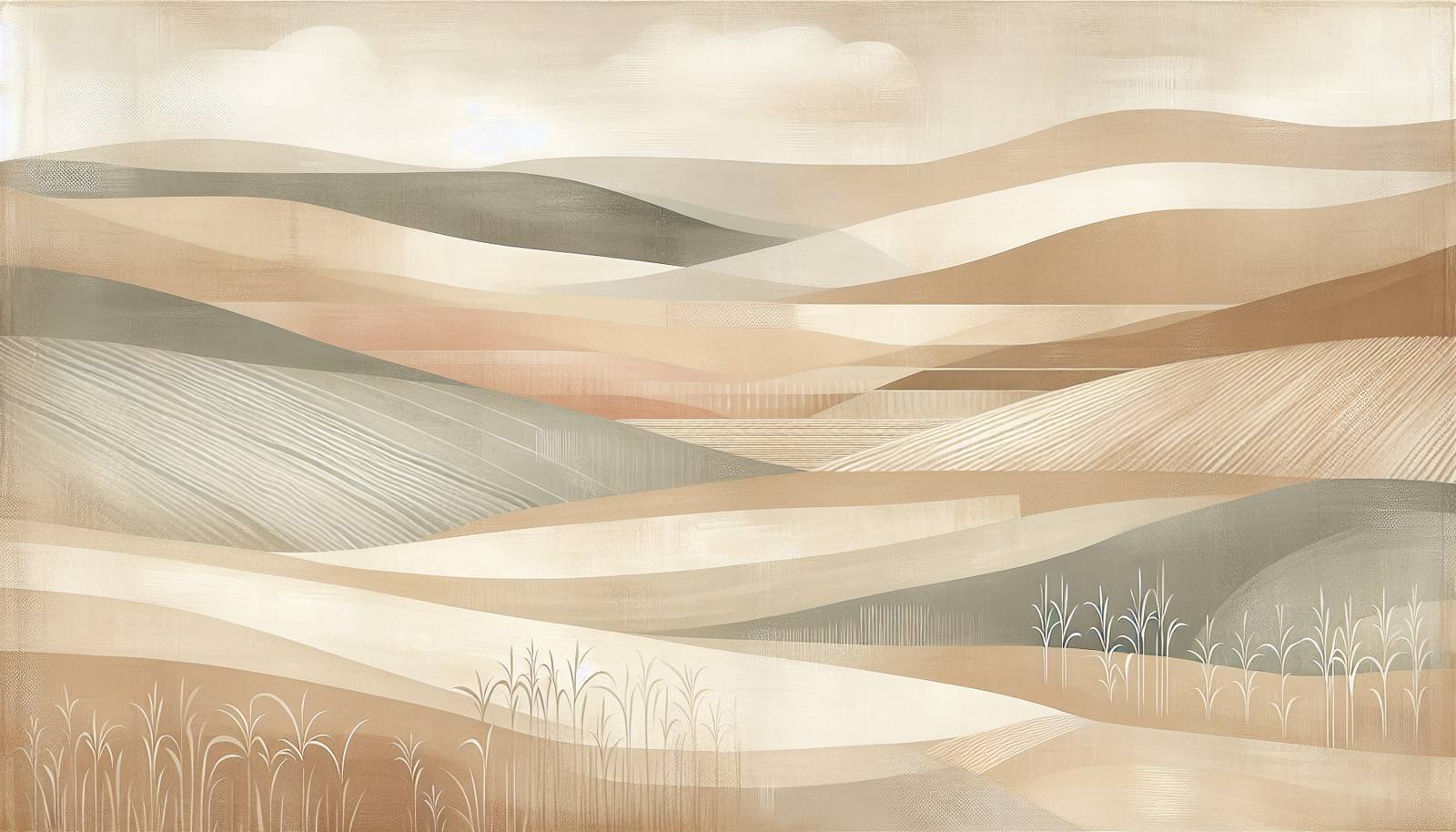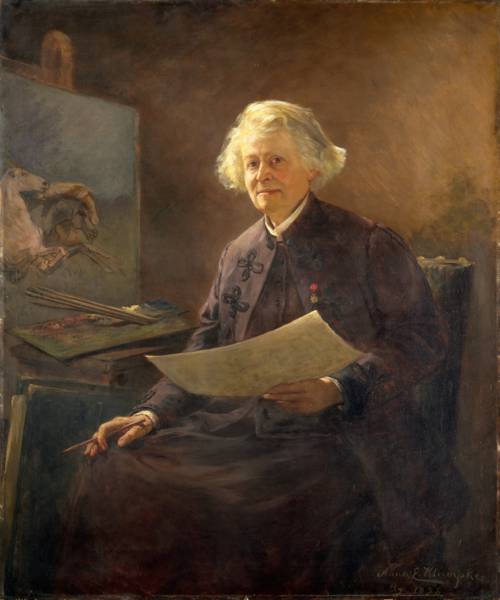
FAQ About Rosa Bonheur

Who was Rosa Bonheur?
Rosa Bonheur was a renowned 19th-century French artist known for her realistic animal paintings. She gained fame during a time when the art world was predominantly male-dominated, becoming one of the most famous female painters of her era. Her dedication to portraying animals with precision and liveliness set her apart as a pioneering figure in her field.

What are some of Rosa Bonheur’s most famous works?
Some of Rosa Bonheur's most famous works include The Horse Fair, which depicts the horse market held in Paris, and Ploughing in the Nivernais, which was commissioned by the French government. Both of these paintings are celebrated for their dynamic composition and realistic portrayal of animals.

How did Rosa Bonheur become interested in painting animals?
Rosa Bonheur’s interest in painting animals was nurtured by her family, particularly her father, Raymond Bonheur, who was also a painter. From a young age, she showed a keen interest in nature and animals, often observing them in her family’s surroundings and later visiting locations like slaughterhouses and livestock markets to study her subjects in detail.

What challenges did Rosa Bonheur face as a female artist in the 19th century?
As a female artist in the 19th century, Rosa Bonheur faced significant challenges such as limited access to artistic training and exhibitions, societal biases against women in professional roles, and restrictions against women visiting places like livestock markets. Despite these obstacles, she obtained special permission from the French government to wear pants, which allowed her to work more freely in environments that were considered inappropriate for women at the time.

How did Rosa Bonheur break societal norms during her time?
Rosa Bonheur broke societal norms by pursuing a professional career in art, which was unconventional for women of her time. She adopted aspects of male attire to aid her artistic endeavors, which allowed her greater freedom to move in the realms necessary for her work, such as horse fairs. Her lifestyle choices, professional success, and the scale of her works were unusual and challenged the gender norms of her period.

Where can I see Rosa Bonheur's paintings today?
Rosa Bonheur's paintings can be viewed in several prominent museums and collections worldwide. Notable venues include the Musée d'Orsay in Paris, where The Horse Fair is held, and the Metropolitan Museum of Art in New York. Her works also feature in smaller exhibitions that celebrate 19th-century art and pioneering female artists.

Was Rosa Bonheur formally trained in art?
Rosa Bonheur did not receive formal academic training in art but was taught by her father, Raymond Bonheur, who was an artist himself. Her education was supplemented by her visits to museums and her dedication to studying animals meticulously from life, which contributed to her highly realistic style.

What style of painting is Rosa Bonheur known for?
Rosa Bonheur is known for her realistic and detailed style, particularly in her depiction of animals. Her works capture the vitality and elegance of her subjects, often set against pastoral or dynamic settings. This realism was achieved through meticulous observation and study of her subjects.

What impact did Rosa Bonheur have on future generations of artists?
Rosa Bonheur’s success and unique approach to art opened doors for future generations of female artists. She became a symbol of female empowerment in the art world, proving that women could achieve the same prestige and recognition as their male counterparts. Her blend of realism and animal subject matter also influenced later wildlife and animal painters.

What materials and techniques did Rosa Bonheur use in her paintings?
Rosa Bonheur primarily used oil paints for her large canvases, employing a technique that involved careful underpainting and layering to achieve realism in texture and color. Her detailed studies of animals often involved numerous sketches and observations, which she used to inform the final compositions.

Did Rosa Bonheur receive any recognition during her lifetime?
Yes, Rosa Bonheur received significant recognition during her lifetime. She was awarded the French Legion of Honor in 1865, becoming the first woman to receive this distinction for her contributions to the arts. Her success and fame were widespread, with her works celebrated across Europe and America.

How did Rosa Bonheur's work influence the field of animal painting?
Rosa Bonheur's work brought a new level of professionalism and detail to animal painting, elevating it from a niche to a respected genre. Her realistic depictions and ability to capture the spirit of her subjects had a lasting influence on both contemporaries and subsequent generations, encouraging more artists to explore the natural world with precision.

What personal traits contributed to Rosa Bonheur's success as an artist?
Rosa Bonheur's success can be attributed to her remarkable talent, strong determination, and her willingness to defy social conventions. Her passion for animals and art drove her to spend countless hours observing and sketching, honing her skills relentlessly. Her independent spirit and confidence in her abilities helped her navigate and succeed in the male-dominated art world of her time.

Did Rosa Bonheur have any influences or mentors in her artistic career?
Rosa Bonheur was greatly influenced by her father, Raymond Bonheur, who was her primary teacher and mentor. She also found inspiration in the works of older masters she studied in museums, as well as from the natural world itself. Her interaction with other artists and the support of family and patrons also played a role in shaping her career and style.

What role did Rosa Bonheur's personal life play in her art?
Rosa Bonheur's personal life, particularly her love of animals and nature, was deeply intertwined with her art. Her rural upbringing and the freedom to explore the natural world were vital in cultivating her interests and passions that defined much of her work. She lived in an animal-filled retreat in the Château de By near Fontainebleau, which provided a constant source of inspiration and opportunity for observation.

How did Rosa Bonheur's art differ from her contemporaries?
Unlike many of her contemporaries who focused on historical or religious themes, Rosa Bonheur was distinctively focused on the realistic portrayal of animals. She brought a scientific precision and a deep empathy to her works, combining both artistic skill and natural observation to create lifelike depictions, which was less common among artists at the time.

Did Rosa Bonheur participate in any artistic movements?
Rosa Bonheur is not closely associated with any particular artistic movements but was part of the larger Realism movement. Her dedication to depicting reality and truth in her paintings aligns with Realist ideals, making her work more accessible and appreciated among those who valued precision and depictions of everyday life.

What legacy did Rosa Bonheur leave behind?
Rosa Bonheur left a legacy as one of the most celebrated female artists in history, inspiring future generations of women in the arts. Her works continue to be admired for their technical skill and realistic depiction of animals. Bonheur's life and career are celebrated as symbols of female empowerment and breaking gender barriers in art.

Was Rosa Bonheur involved in any political or social causes?
While Rosa Bonheur was not overtly involved in political or social causes, her actions and lifestyle choices had political implications. By breaking gender norms and succeeding as a woman in a male-dominated field, she quietly championed for women's rights and equality. Her choice to live life according to her own terms was a significant statement against the rigid social conventions of her time.

What was Rosa Bonheur's artistic process like?
Rosa Bonheur's artistic process was meticulous and involved numerous preparatory sketches and studies. She dedicated a great deal of time to observing animals in their habitats, often making rough drafts before commencing the final piece. Her paintings reflect careful attention to detail, a quest for authenticity, and an intense study of anatomy and movement to capture the essence of her subjects.
